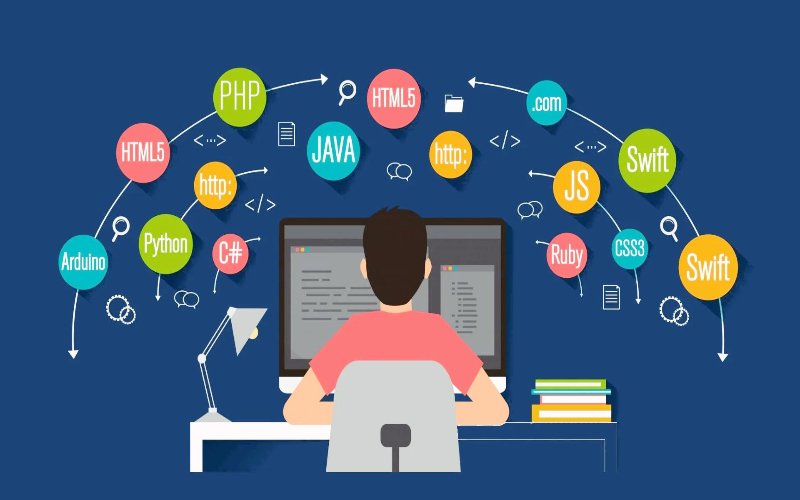In the ever-evolving world of technology, developers are constantly on the lookout for new tools and languages that improve efficiency and scalability. As the industry advances, emerging programming languages continue to gain traction. These languages offer innovative features designed to tackle modern development challenges, from system safety to performance optimization. Whether you’re a seasoned developer or someone just starting in the field, knowing which languages are on the rise can give you a competitive edge.
In this blog, we’ll explore emerging programming languages that are shaping the future of software development. We will break down their strengths, weaknesses, and where they are making the biggest impact.
What Are Emerging Programming Languages?
Before diving into specific languages, it’s important to define what we mean by “emerging.” Emerging programming languages are those that have recently gained popularity or are being developed to meet the evolving needs of the industry. While languages like Java, C++, and Python have been around for decades, newer languages are designed with modern problems in mind, such as concurrency, data safety, and cross-platform development.
These languages offer unique features that traditional ones might lack. From better performance to more readable syntax, the benefits are often specific to the industry and the type of project you’re working on. Let’s delve into the languages making waves today.
Rust – Memory Safety Without Garbage Collection
The Rise of Rust
Rust has quickly emerged as a go-to language for system programming. Its main selling point is its focus on memory safety without the need for a garbage collector, which traditionally slows down the performance of languages like Java or C#. Rust’s ownership model ensures that developers don’t run into issues like dangling pointers or data races, common in C or C++.
Why Rust is Popular
Rust is widely used in areas like embedded systems, game development, and even web applications, thanks to its fast performance. Its syntax is also relatively easy to learn for developers with experience in C-based languages, making it a strong candidate for anyone looking to explore system-level programming.
Kotlin – The Future of Android Development
Kotlin’s Rise in Mobile Development
Kotlin has been making headlines ever since Google announced it as the preferred language for Android app development. Designed to be a more modern, concise version of Java, Kotlin improves developer productivity by reducing boilerplate code. It is fully interoperable with Java, which means developers can seamlessly transition between the two languages in their projects.
Kotlin’s Versatility
Kotlin is not limited to Android apps. It’s also gaining traction for server-side development with frameworks like Ktor. Kotlin’s cross-platform capabilities allow developers to use the same codebase for Android, iOS, and web applications. As mobile and cross-platform development grows, Kotlin remains a prominent player in the landscape of emerging programming languages.
Elixir – Concurrency and Fault Tolerance at Its Best
Elixir’s Concurrency Model
Elixir is based on the Erlang Virtual Machine (BEAM), known for its support of concurrent, distributed applications. Elixir has quickly gained a following in industries that demand high availability, such as telecommunications and finance. Its syntax is clean and functional, making it easier for developers to write scalable, fault-tolerant applications.
Performance in Real-Time Systems
With Elixir, developers can build systems capable of handling thousands of concurrent users without compromising performance. This makes it an attractive option for chat applications, messaging platforms, and even real-time dashboards. Its rise in popularity places it firmly in the category of emerging programming languages designed for modern, scalable applications.
Swift – Apple’s Preferred Language
Swift’s Simplicity and Performance
Swift was introduced by Apple in 2014 and has since become the go-to language for iOS and macOS development. Designed for simplicity and performance, Swift allows developers to create apps quickly while maintaining speed. Its clean syntax and safety features, such as optional types, reduce the chances of bugs, especially common ones like null pointer crashes.
Swift’s Growing Popularity
Swift’s ease of use has made it a favorite among developers transitioning from languages like Python or JavaScript. Its performance and safety features ensure that it will remain relevant as mobile app development continues to grow. Swift stands as a powerful player in the emerging programming languages arena, especially for Apple’s platforms.
TypeScript – Enhancing JavaScript for Better Web Development
Why TypeScript Matters
JavaScript is arguably one of the most popular languages today, especially for front-end web development. However, its dynamic typing can lead to runtime errors that are hard to debug. TypeScript solves this problem by adding static typing, making the code more predictable and easier to maintain.
TypeScript’s Role in Web Development
TypeScript is now considered a must-learn for developers working on large-scale web applications. Its ability to catch errors early in the development cycle makes it invaluable in reducing bugs and improving team collaboration. As one of the most popular emerging programming languages, TypeScript continues to be adopted across a wide range of web projects.
Dart – Empowering Flutter for Cross-Platform Development
Dart’s Role in Cross-Platform Apps
Dart has been gaining traction mainly due to its association with Flutter, Google’s cross-platform UI toolkit. Dart enables developers to build apps that work across Android, iOS, and even web platforms, all from a single codebase.
Hot Reload and Development Speed
Hot-reload, which enables developers to observe changes instantaneously, is one of Dart’s unique characteristics.This reduces development time and increases productivity, making Dart an ideal language for those focusing on cross-platform app development.
What to Expect from the Future of Emerging Programming Languages
As we look ahead, it’s clear that emerging programming languages are continuously evolving to meet the demands of new industries and challenges. From improving safety to enhancing concurrency, these languages are built for specific tasks that traditional ones may struggle with. As technology advances, developers can expect to see more languages tailored to niche applications, allowing for faster, safer, and more scalable software development.
Staying up-to-date with these emerging programming languages can give developers a competitive edge and prepare them for the ever-changing landscape of technology. Whether you are looking to build mobile apps, system software, or large-scale web applications, there’s an emerging programming language that’s perfect for the task.
Conclusion
The world of programming is always evolving, and keeping up with emerging programming languages is key to staying ahead. Whether it’s Rust’s memory safety, Kotlin’s versatility in mobile development, or Dart’s prowess in cross-platform apps, these languages offer solutions to modern development challenges. Embracing these languages can provide developers with the tools they need to build faster, more secure, and scalable applications, ensuring they stay competitive in a rapidly advancing industry.
Also visit on techitl.com.




